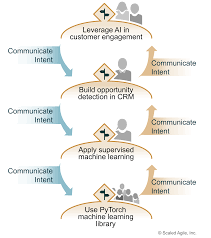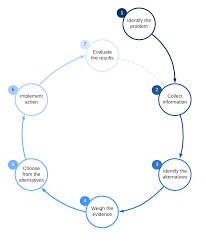The Importance of Decision Matrix Criteria in Making Informed Choices
When faced with complex decisions, it can be challenging to weigh all the factors and make the best choice. This is where decision matrix criteria come into play. A decision matrix is a valuable tool that helps individuals and organizations evaluate options based on a set of criteria.
Decision matrix criteria are the specific factors or attributes that are used to assess each option in a decision matrix. These criteria can vary depending on the nature of the decision being made, but they typically include things like cost, time, quality, risk, and impact.
By establishing clear and relevant criteria, decision makers can objectively compare different options and determine which one aligns best with their goals and priorities. This systematic approach helps ensure that decisions are based on logical reasoning rather than subjective opinions.
One of the key benefits of using decision matrix criteria is that they provide a structured framework for evaluating options. This allows for a more organized and methodical decision-making process, reducing the likelihood of overlooking important factors or making hasty judgments.
Furthermore, decision matrix criteria help promote transparency and accountability in decision making. By clearly defining the criteria used to evaluate options, stakeholders can understand why certain choices were made and have confidence in the decision-making process.
In conclusion, decision matrix criteria play a crucial role in helping individuals and organizations make informed choices. By establishing clear and relevant criteria, decision makers can effectively evaluate options, minimize bias, and ultimately make decisions that are well-informed and aligned with their objectives.
8 Essential Tips for Creating an Effective Decision Matrix
- Clearly define your decision criteria before evaluating options.
- Assign weights to each criterion based on their importance.
- Use a consistent scale (e.g., 1-5 or 1-10) for rating each option against the criteria.
- Consider both quantitative and qualitative factors in your decision matrix.
- Regularly review and update your decision criteria to ensure relevance.
- Involve relevant stakeholders in defining and prioritizing decision criteria.
- Document the rationale behind the weight assigned to each criterion.
- Be flexible and willing to adjust your decision matrix as new information becomes available.
Clearly define your decision criteria before evaluating options.
To make effective use of decision matrix criteria, it is essential to clearly define your decision criteria before evaluating options. By establishing specific and relevant criteria upfront, you can ensure that your evaluation process is focused and objective. Clear definitions of decision criteria help you align your choices with your goals and priorities, enabling a more systematic and logical approach to decision-making. This proactive step not only streamlines the evaluation process but also helps you make well-informed decisions that are in line with your objectives.
Assign weights to each criterion based on their importance.
Assigning weights to each criterion based on their importance is a critical step in utilizing decision matrix criteria effectively. By assigning weights, decision makers can prioritize certain criteria over others, reflecting their relative significance in the decision-making process. This ensures that the most important factors carry more influence in evaluating options and ultimately leads to more informed and strategic decision outcomes. Weighted criteria help decision makers focus on what truly matters, guiding them towards selecting the option that best aligns with their goals and priorities.
Use a consistent scale (e.g., 1-5 or 1-10) for rating each option against the criteria.
To ensure a fair and accurate evaluation of options using decision matrix criteria, it is essential to use a consistent scale, such as a range of 1-5 or 1-10, for rating each option against the established criteria. By employing a standardized scale, decision makers can maintain consistency in their assessments and facilitate easier comparison between different options. This approach helps to avoid ambiguity and ensures that all criteria are evaluated uniformly, leading to more reliable and objective decision-making outcomes.
Consider both quantitative and qualitative factors in your decision matrix.
When creating a decision matrix, it is essential to consider both quantitative and qualitative factors. While quantitative data such as costs, time, and numbers provide measurable insights, qualitative factors like customer satisfaction, brand reputation, and employee morale offer valuable perspectives that cannot be solely captured through numbers. By incorporating both types of factors into your decision matrix criteria, you can ensure a more holistic evaluation of options and make well-rounded decisions that take into account all relevant aspects of the situation.
Regularly review and update your decision criteria to ensure relevance.
Regularly reviewing and updating your decision criteria is essential to ensure their relevance and effectiveness in the decision-making process. As circumstances change and new information becomes available, it is important to assess whether the existing criteria still align with your goals and priorities. By staying proactive and adapting your decision matrix criteria as needed, you can make more informed choices that reflect the current context and maximize the likelihood of achieving successful outcomes.
Involve relevant stakeholders in defining and prioritizing decision criteria.
It is essential to involve relevant stakeholders in the process of defining and prioritizing decision criteria when using a decision matrix. By including key individuals who have a vested interest in the outcome of the decision, you can ensure that the criteria chosen are comprehensive and reflective of the diverse perspectives and priorities within the group. This collaborative approach not only enhances the quality of the decision-making process but also fosters buy-in and support from all stakeholders, leading to more effective implementation of the chosen course of action.
Document the rationale behind the weight assigned to each criterion.
When utilizing decision matrix criteria, it is essential to document the rationale behind the weight assigned to each criterion. By clearly outlining the reasons for assigning specific weights to different criteria, decision makers can ensure transparency and accountability in the decision-making process. Documenting the rationale helps stakeholders understand the thought process behind the weighting system and provides clarity on why certain criteria are deemed more important than others. This practice enhances the credibility of the decision-making process and allows for a more objective evaluation of options based on established criteria.
Be flexible and willing to adjust your decision matrix as new information becomes available.
It is essential to be flexible and open to adjusting your decision matrix as new information becomes available. By remaining adaptable, you can incorporate additional criteria or modify existing ones to ensure that your evaluation process remains relevant and accurate. Being willing to update your decision matrix allows you to make more informed decisions based on the most up-to-date information, ultimately leading to better outcomes and choices that align more closely with your goals and priorities.




